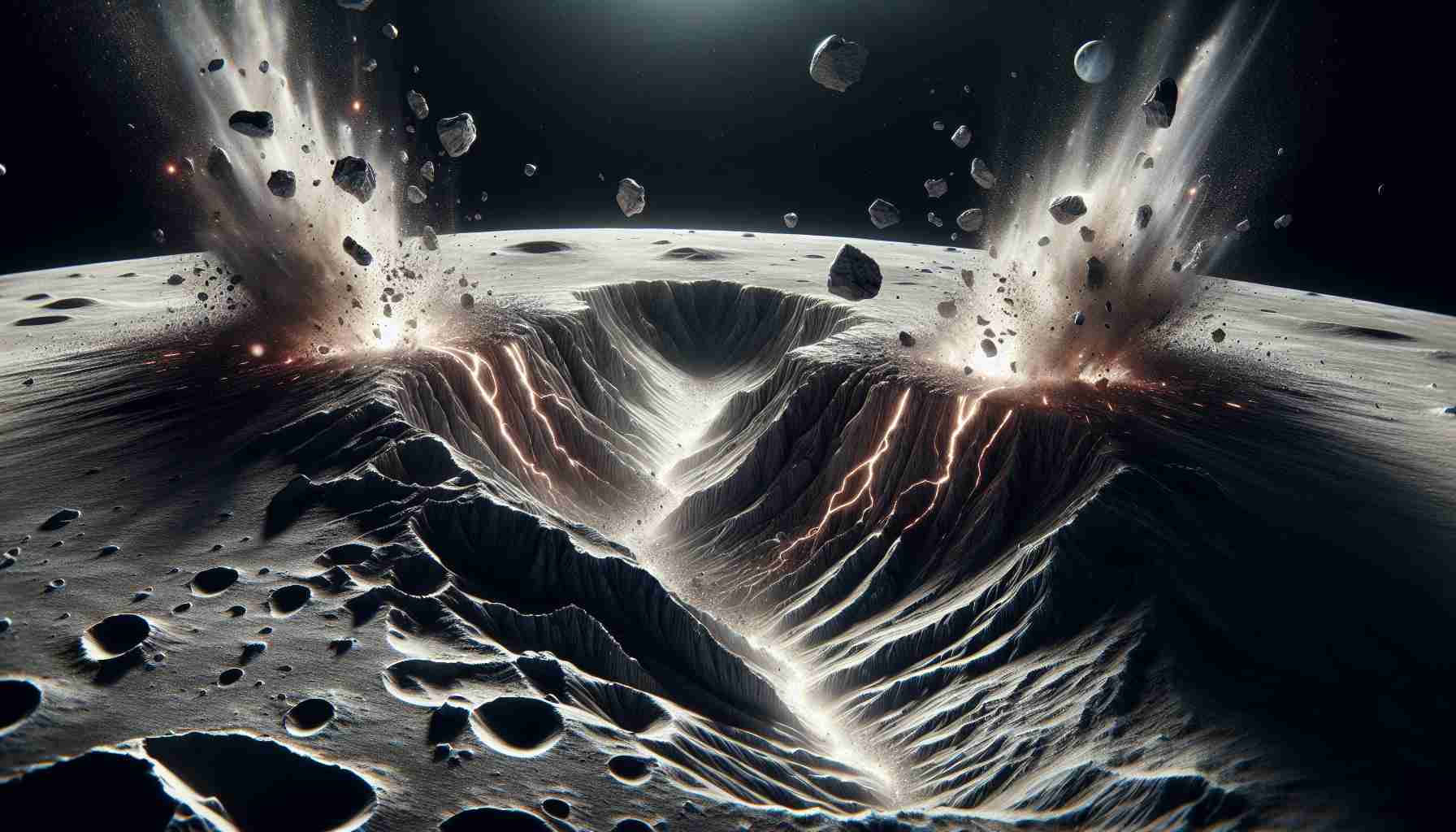- An ancient asteroid impact, occurring 3.8 billion years ago, created two large canyons on the moon’s surface within ten minutes.
- The impacting asteroid was 15 miles wide, significantly larger than the one that caused the dinosaur extinction.
- This event released energy equivalent to 130 times that of the entire world’s nuclear arsenal.
- The canyons, Vallis Planck and Vallis Schrödinger, measure 174 miles and 168 miles in length, respectively, with depths of 2.2 miles and 1.7 miles.
- The findings provide crucial insights into the moon’s early formation and the potential existence of a molten rock ocean.
- This discovery ignites interest in upcoming lunar missions, including NASA’s Artemis program, aimed at further exploration.
A breathtaking discovery reveals that an ancient asteroid impact shaped the moon’s surface, crafting two colossal canyons in less than ten minutes! Approximately 3.8 billion years ago, a cosmic rock—estimated to be 15 miles wide, larger than the asteroid that wiped out the dinosaurs—slammed into the moon near its south pole, unleashing unimaginable energy.
Scientists sifted through data collected by NASA’s Lunar Reconnaissance Orbiter and used advanced modeling to track the path of debris flung from the moon’s surface. This explosive event released energy equivalent to 130 times the entire world’s nuclear arsenal! The results were two vast canyons in the “Schrödinger impact basin,” named Vallis Planck and Vallis Schrödinger. Vallis Planck stretches an impressive 174 miles long and dives down 2.2 miles, while Vallis Schrödinger reaches 168 miles in length and 1.7 miles deep.
As researchers prepare for future lunar missions, including NASA’s Artemis program aimed at exploring this untouched region, the findings of these canyons hold vital clues to the moon’s early formation. They could even help unravel the mystery of whether the moon once featured a vast ocean of molten rock.
Beyond just a scientific breakthrough, this discovery captivates our imagination—fueling excitement for future moon exploration that could pave the way for human presence beyond Earth. As we venture closer to answering these cosmic questions, the moon’s secrets are gradually being revealed.
Asteroid Impact Unveils the Moon’s Hidden Secrets: What You Need to Know!
Introduction
Recent research has illuminated the colossal impact an ancient asteroid had on the moon, profoundly shaping its surface in a matter of minutes. This discovery has not only reshaped our understanding of lunar geology but has also sparked interest in potential future explorations as part of NASA’s Artemis program.
Key Features of the Discovery
1. Asteroid Size and Impact: The asteroid that hit the moon was approximately 15 miles wide, making it significantly larger than the asteroid believed to have caused the dinosaurs’ extinction.
2. Energy Release: The collision released a staggering amount of energy—comparable to 130 times the total power of the world’s nuclear arsenal.
3. Formation of Canyons: The impact created two major canyons located in the Schrödinger impact basin:
– Vallis Planck: 174 miles long and 2.2 miles deep.
– Vallis Schrödinger: 168 miles long and 1.7 miles deep.
4. Historical Context: This event took place approximately 3.8 billion years ago, during a period when the moon was actively geologically reshaping.
Insights and Trends
– Future Missions: As part of NASA’s Artemis program, upcoming missions aim to study these canyons closely. Understanding the geological history of the moon will be crucial for future lunar colonization efforts.
– Geological Implications: The research into these canyons adds to the hypothesis that the moon might have harbored molten rock oceans in its early history—indicative of a more dynamic geologic past than previously thought.
Questions and Answers
Q1: What role does the Schrödinger impact basin play in understanding lunar formation?
A1: The Schrödinger impact basin is crucial because it holds key geological features that help scientists understand the moon’s early surface conditions and volcanic activity. The presence of the canyons provides insight into the energy dynamics of large impacts and their effects on lunar geology.
Q2: How might these findings impact future lunar exploration?
A2: The findings provide valuable insights into the moon’s history, potentially guiding astronauts on where to explore for resources and areas of scientific interest. Understanding the impact events could also help in assessing landing sites’ stability for future missions.
Q3: Are there any potential controversies surrounding lunar exploration based on these findings?
A3: Yes, one controversy could revolve around the ethical implications of lunar resource extraction. As exploration intensifies, questions regarding territory, resource allocation, and the preservation of lunar heritage could emerge, sparking debate among countries and space agencies.
Limitations
While the discovery opens new avenues for exploration and understanding, there are limitations in the current research. For example, the modeling of impact events relies heavily on assumptions that may not fully capture the complexity of lunar geology. Additionally, the technology used in Lunar Reconnaissance Orbiter data collection has limitations in resolution, which may affect the accuracy of findings.
Related Links
For more information and latest updates on lunar exploration, visit NASA.
Conclusion
This discovery not only reshapes our understanding of the moon’s past but also propels interest and curiosity in future lunar missions. As we prepare for exploration, the moon promises more secrets waiting to be unveiled, enhancing our quest for knowledge about the cosmos.


















